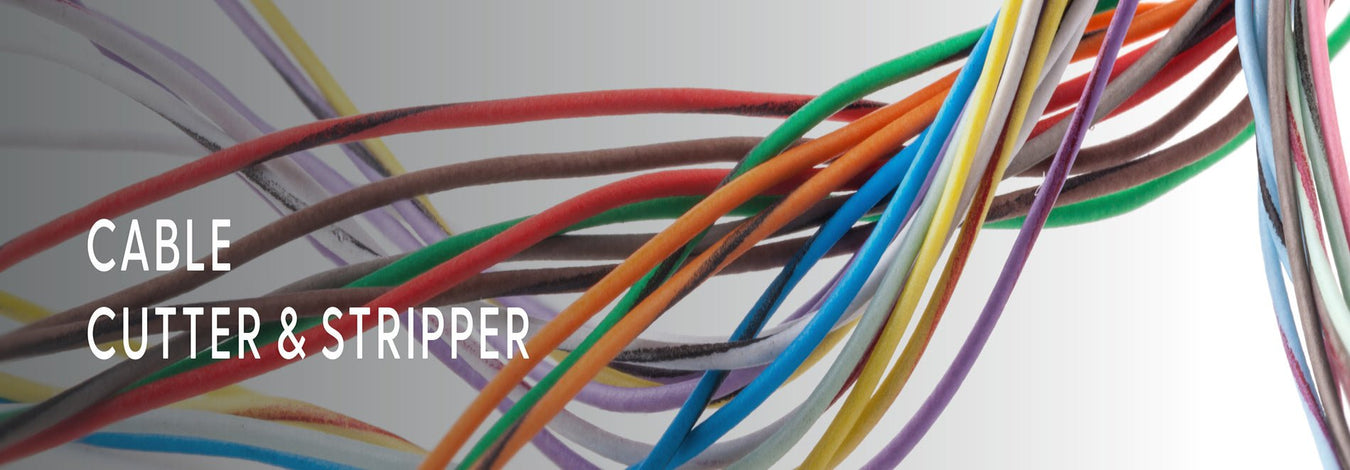
What Can I Use to Crimp Wire Rope?
Table of Contents
Wire ropes are quite useful in a wide range of industries, from automotive, aerospace, rail, and construction to crane & lifting. Thanks to their versatility. Using wire ropes effectively often requires making some kind of connections that allow easy anchoring to other components. It also helps maintain the integrity of wire rope connections regarding safety: it helps make tight connections. More importantly, crimp connections help terminate an end of a wire rope.
For this reason, most professionals embark on making crimp connections on wire ropes using swage sleeves/ ferrules/fittings, and unique tools. What can I use to crimp wire rope? You can only use a wire rope crimping tool, which is usually called a wire rope swager or wire rope swaging tool. Let's explore more what wire rope swag is and how to use it to make crimp connections.
Understanding Wire Rope Swager
A wire rope swager or a wire rope crimping tool is a unique tool used to deform, compress, and secure wire rope sleeves/ fittings onto the end of a wire rope. Generally, it's a type of crimper used in the swaging (an installation technique for connecting swage sleeves/ ferrules to a wire rope). Different types of wire rope crimping tools are based on the design and how they operate. They include:
1- Hand swage tool
Hand swagers or hand swage tools are manually operated to crimp sleeves on wire ropes. They're best for light-duty applications. Most of them are also quite portable, versatile, affordable, and easy to use. Depending on the design, some hand swagers have interchangeable dies and a feature that allows wire rope cutting. An ideal example of a hand swage tool is the iCrimp CWR1522 Wire Rope Swage Tool or the iCrimp IWS-1608M-C Swaging Tool.
2- Hydraulic swage tool
These tools use hydraulic pressure to crimp swage fittings onto wire ropes. Unlike hand swage tools, hydraulic swage tools are suitable for heavy-duty applications as they handle wire ropes with a slightly larger diameter.
3- Bench-mounted swaging tool
As the name suggests, these swage tools are mounted on a workbench. Most of them are manually operated single-handedly, and it's easy to operate. A tool like the iCrimp IWS-1608DTS Bench Swaging Tool features interchangeable dies, toggle action pre-set tension, and can crimp aluminum sleeves and ferrules.
4- Pneumatic Swage tool
A pneumatic swage tool is another type of wire rope crimping tool that uses compressed air to generate the force required for swaging. It often tends to share some similarities with hydraulic swage tools. However, they are faster and more precise than other types of swage tools. The iCrimp AM-116 Pneumatic Wire Rope Crimping Tool is a good example.
How to Crimp Wire Ropes Using a Wire Rope Swager
Below is a brief process on how to use a wire rope crimping tool:
Step 1: Measure and cut the wire rope
Start by measuring the length needed for the wire rope and use a wire rope cutter to make a clean cut. The iCrimp CWR35 cutter is an ideal wire rope cutter for 3.5mm wire rope.
Step 2: Select the right swage fittings
The next step entails choosing the right swage fittings/sleeves: the fittings should match the diameter of your wire rope and application.
Step 3: Position the fittings onto the wire rope
You should slide your swage fitting through the end of the wire rope and position it correctly. Usually, the end of the wire rope goes through one hole and creates a loop to allow the same end to go back through the other hole of the same fitting. You must ensure the end of your wire rope isn't flared.
Step 4: Crimp the fittings
Open the jaws of your swage tool or wire crimping tool and position the fitting for crimping on the right jaw cavity. To complete the crimping process, apply pressure on the handles to close the jaws. Also, remember to apply consistent pressure to ensure you create secure crimp connections. Above all, you can crimp a single fitting several times depending on its size or the tool's cavity size.
Step 5: Inspect the crimp connection
The final step entails inspecting the created crimp connection. Ensure there is no damage to the fittings and that they are properly attached to the wire rope. At this stage, using a swaging gauge comes in handy to check the integrity of the crimp connection.
Read more: How to Use a Wire Rope Crimping Tool
Bottom line
Crimping wire ropes is simple, especially when you have the right tools, like a wire rope swager. An ideal wire rope crimping tool should be ergonomically designed and easy to use. Above all, it should allow a user to change the jaws/ dies, thus enhancing its versatility in crimping wire ropes of different sizes.
Are you looking for quality and affordable swaging tools for your next project? iCrimp is the ideal platform for getting different types of wire rope crimping tools and cutters. Click here to see our tools catalogue.
References





